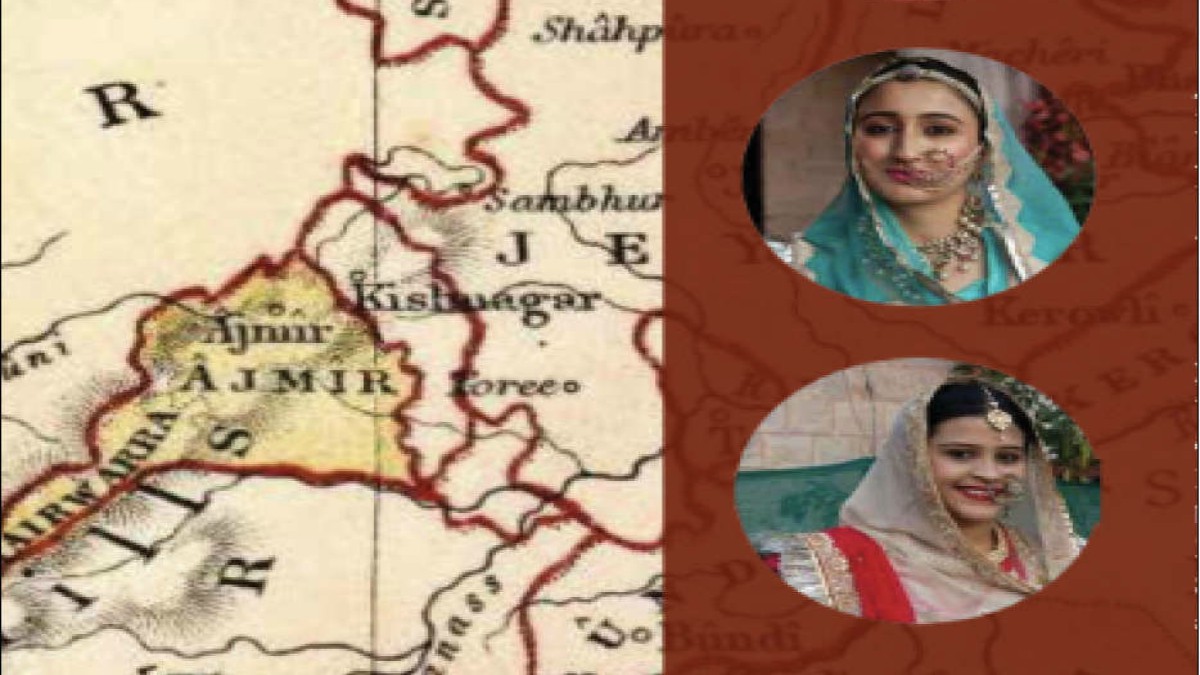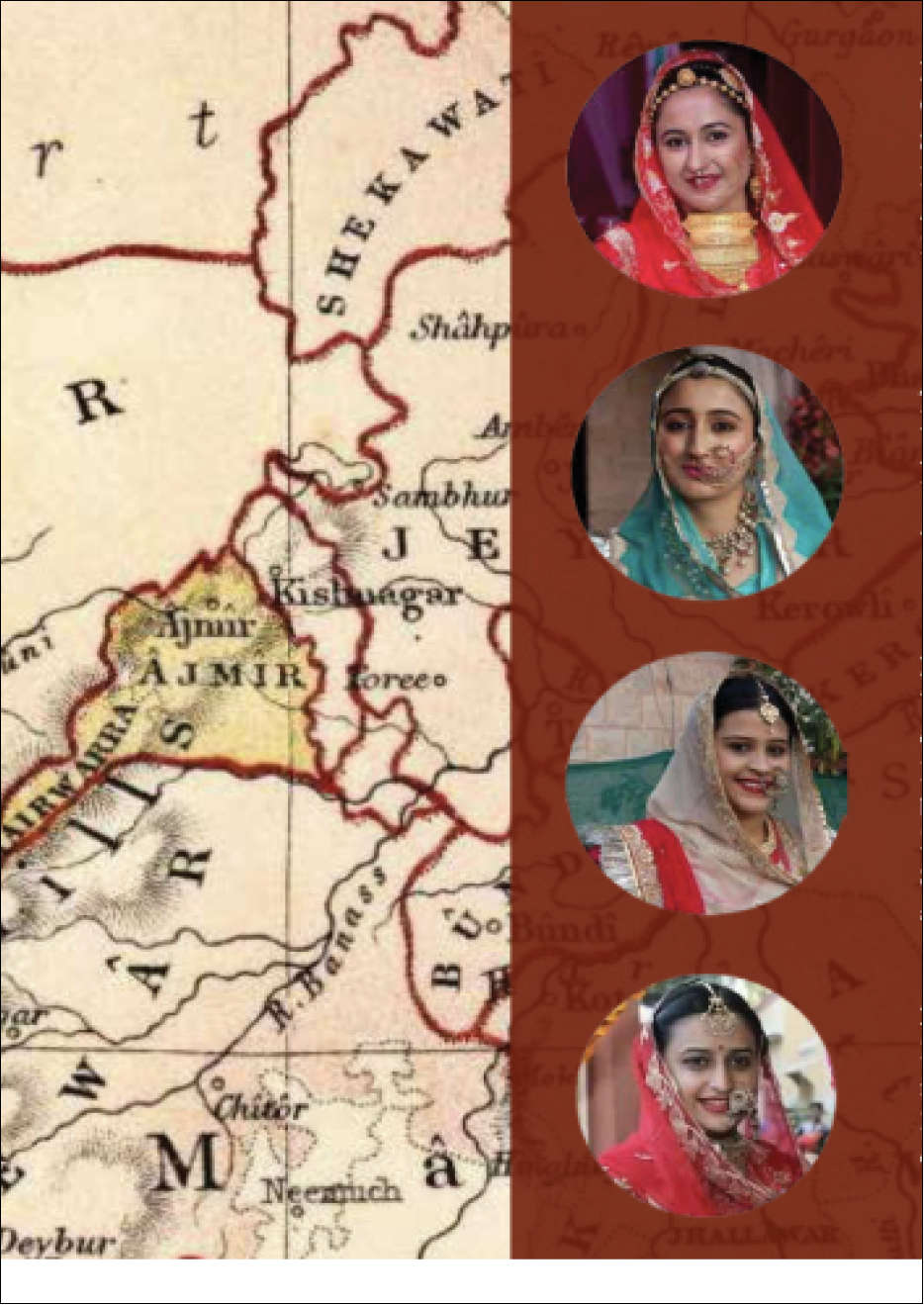


Given the paradoxes that surround us in present times such as the coexistence of globalisation and ethnocentrism; and diversity and polarisation, the house of Amarkot serves a peculiar mediation of culture across one of the world’s most contested borders. I am joined by its daughter-in-law, Padmini and princesses—Deval, Aparajita and Mahalaxmi Sodha—to discuss their embodiment of transnational diversity, and how it impacts their identity and sense of belonging. The three sisters have been married into India’s houses of Auwa, Awagarh and Balrampur respectively.
The youngest of the lot, Mahalaxmi begins by introducing Amarkot’s relegation in Pakistan as a result of deliberated sentiments. “In 1947 when Hindus from Sindh were migrating, my grandmother, Rajmata Dev Kunwar was unwilling to part from her roots and chose to stay back. Seeing her, the majority of the Hindus also changed their mind and stayed back. Then, it was the Muslims who stood by the family to protect them from harm’s way”. This sentimental account is topped by her older sister Deval: “You can take a Sodha out of the desert, but you can’t take the desert out of the Sodha.”

Despite hailing from a conservative family, the present-day Sodha patriarch Rana Hamir Singhji kept up with the times when it came to bringing up his daughters. Both Deval and Aparajita pursued their schooling in Rajashtan’s Mayo College Girls’ School while their younger sister Mahalaxmi went to a leading convent school in Karachi. Having spent the most amount of time in Pakistan amongst all three sisters, Mahalaxmi sums up a concise narration of her sentiments. “Pakistan is my motherland, it will always hold a special place in my heart. I am proud to be born in a country whose people in general are very liberal in their thinking and beliefs. Women are safe; and although an Islamic Republic, the people of Pakistan are free to openly practice their religion. We took part in Muslim festivals such as Eid and our Muslim friends were part of our festivals such as Holi and Diwali. The food is exceptionally good and people are very welcoming and hospitable, which compels one to visit again and again. Be it joy or sorrow, Hindus and Muslims stand together.”
The three girls fondly recollect their childhood memories. “When I look back now, I can say my childhood is what any child would dream of. I had the best of both worlds, as my grandfather and father were prominent political figures, we got to be a part of the city (Karachi) and yet go back to the village as and when we wished”, Aparajita says jovially. This much-needed exposure notwithstanding, she lays emphasis on being conditioned around their arranged marriages to a Rajput, and the inevitable geographical displacement implied therewith. She states her own example of a transnational matrimonial alliance with many nuances, “After marriage whether one is in India, the US or Pakistan, they are bound to face challenges and changes. Marrying in the same community comes with the particular advantage of one not having to go through drastic measures of adjustment. Changes are weather, food, clothes, making new contacts. Other than that, it’s just a new home with new faces.” Predictably, this statement could arouse an interesting debate with married women taking varied stances based on their lived experiences.
Regardless of the numerous variables and experiences around matrimony, one can safely admit to married women being important mediators of culture. The realms that a married woman domesticates become an interestingly complex area of cultural fusion, one in which traditional interactions multiply and evolve. In this equation there lies a delicate balance that Deval elaborates on. “It is important for a girl to retain her roots and cultural heritage as that is her identity. However, it is equally important for her to have an open mind to imbibe the culture and heritage of the family that she marries into.” Aprajita adds, “Retaining one’s roots and cultural heritage is as important as knowing one’s parents and identifying with them. I feel there should not be any difference of thought towards a son or daughter. Since they both need to be versed with that knowledge to be able to let the coming generation know and make others aware of where s/he comes from.”
The ongoing discussion becomes all the more complex and interesting when Padmini’s viewpoints are factored in. The outdoorsy lover of sports and erstwhile national-level cricketer spent her childhood in Jaipur lest knowing her destiny lay in marrying the eligible Sodha prince and settling down in Sindh. Bright, vivacious and full-of-life, Padmini comments, “Maintaining culture and heritage differs for a boy and a girl. I believe it is a little easier for the boy as he has to maintain or carry on the culture in his own family where he has been brought up and lived for all his life. On the other hand, the girl has to do so in a family in which she hasn’t been brought up. She also has to bring up her children and instill in them the culture and tradition of the family that she has been married into.”
Having undergone a significant plunge in terms of localities, Padmini is bound to miss her home, her loved ones, the food, festivals and childhood memories, just as the Amarkot sisters do. However, their nostalgia is punctuated by a convergence on the understanding of one’s matribhoomi or motherland. The vivid similarities on either sides of the border starkly highlight how much more similar Indians and Pakistanis are to one another than we understand them to be.
“Now that I have been living in Pakistan for five years, it is sad to see people of the same colour and race have so much confusion and misunderstanding between one another. There are helpful, strong, good and bad people on both sides. People drink tea and suffer from corruption on either sides. We look similar, we share the same level of cricketing passion, we have lots in common. India has Dhinchak Pooja and Pakistan has Tahir Shah. For the past seventy years, our countries could not establish peace with each other, and yet, we share a Nobel prize for peace”, exclaims Padmini.
Similarly, Maha draws parallels between the cities of Karachi and Lucknow, on how either of the cities made her feel closely familiar as did the other. Deval provided a fitting closing statement on the topic, “Historically, we’re all the same people. What is now referred to as a cross-border alliance is something that was very normal. Countries may have been formed and borders created but ties that have been there for over a millennium will not be so easy to sever!”
Like their older sister, Aprajita and Maha are firm believers of cultures cutting across borders. In Aprajita’s words, “Cultures don’t see boundaries and are spread not only within a certain periphery but wherever one goes.”